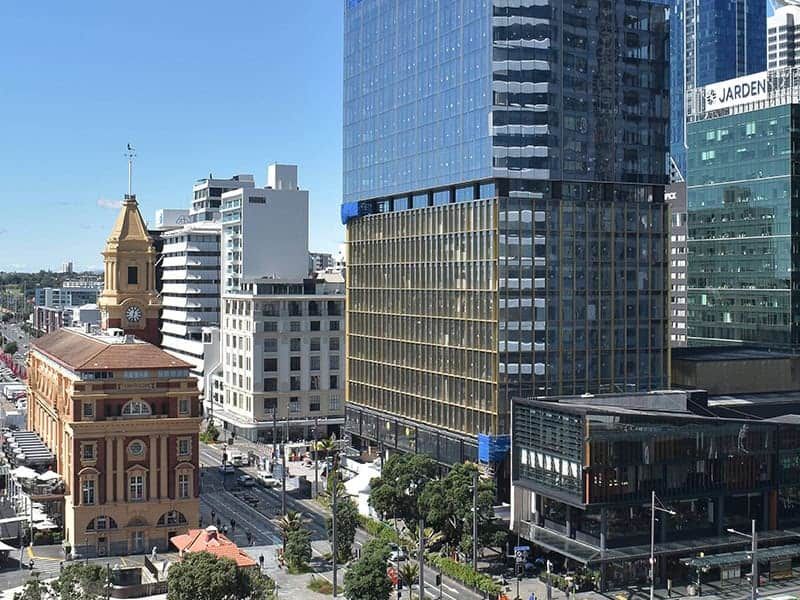TE KAHA DELOITTE CENTRE AT ONE QUEEN STREET
When Precinct Properties, New Zealand’s largest owner and developer of premium city centre real estate, purchased the waterfront site in Auckland, some people saw a tired office building. But Precinct’s team saw potential to create an elegant low-carbon icon. Gifted the name Te Kaha, the building at One Queen Street is now home to distinguished international tenants Deloitte, Bell Gully, and the fabulous InterContinental Hotel.
RLB’s involvement in the One Queen Street project began at its inception, when client Precinct Properties asked us to provide due diligence and feasibility estimating services for various options. RLB stayed steadfast as our role evolved during the design phases, procurement of consultants and main contractor, right through to the complex construction phase and successful completion.
At a glance
- ClientPrecinct Properties
- ServicesCertainty
- sectorMixed Use
- LocationAuckland, New Zealand
Successful delivery of One Queen required a cohesive and resilient team
The 21-storey building had good bones and a large store of embodied carbon and materials in its existing frame. The structure was stripped back and reused, and innovative engineering and inspired design combined to envisage an addition of slab extensions and extra levels. The building is now home to a 139-room hotel, ground floor retail, as well as two levels of private office suites, nine levels of premium grade office space, a hotel restaurant and spectacular rooftop bar.
From the day Precinct Properties bought the previously tired old building, we were delighted to be involved. Re-lifing an existing building is a great sustainability move – they could have just bowled it over and built something new, but instead chose to strip it to its bones and breathe new life into it. You can’t get much more sustainable than that.Steve Gracey, Managing Director, RLB
Redevelopment projects traversing multiple sectors bring interesting challenges. One Queen Street presented added complexities too: a global pandemic, resulting supply chain issues and rampant cost escalation, as well as a massive flooding events. Few projects of this scale have seen such a variety of challenges. But the entire consultant team was vigorous and cohesive, committed to delivering an outstanding project.Stefan Fourie, Associate Director, RLB
A stunning mix of cool commercial and high-end hospitality
Collaboration and careful 3D modelling ensured existing floor-to-floor height could accommodate a range of functions under the one roof.
Standing sentinel on Auckland’s sparkling harbour, the building offers world-class views and spaces for global clients and guests.
- 9,850
tonnes embodied carbon saved
- 6Star
Green Star target from the New Zealand Green Building Council
- 14,000m2
premium office space
Triumph through teamwork
One Queen Street demanded hands-on input from the client and consultants at each stage. Unpredictable challenges, including major climate-related floods, and multiple Covid-19 lockdowns delayed the program. Adjacent construction developments added site constraints. Reliable documentation on the below-ground infrastructure was absent. Scope was shuffled multiple times and proactive value engineering was required at all stages. RLB was a crucial part of the agile team that made successful delivery non-negotiable.
Commercial Bay starts a new chapter with pride and purpose
The project marks the completion of the Commercial Bay precinct masterplan, which restores the waterfront to the heart of Auckland. RLB has played a pivotal role in the successful delivery of several significant projects that have revitalised downtown Auckland, including PwC Tower, the Downtown Infrastructure Development Project, City Rail Link, Jarden House, and now Te Kaha at One Queen Street. The Commercial Bay precinct, given its English name in the 1800s in honour of its importance as a place of transport and trade, starts a new chapter with pride and purpose.

FURTHER INFORMATION:


